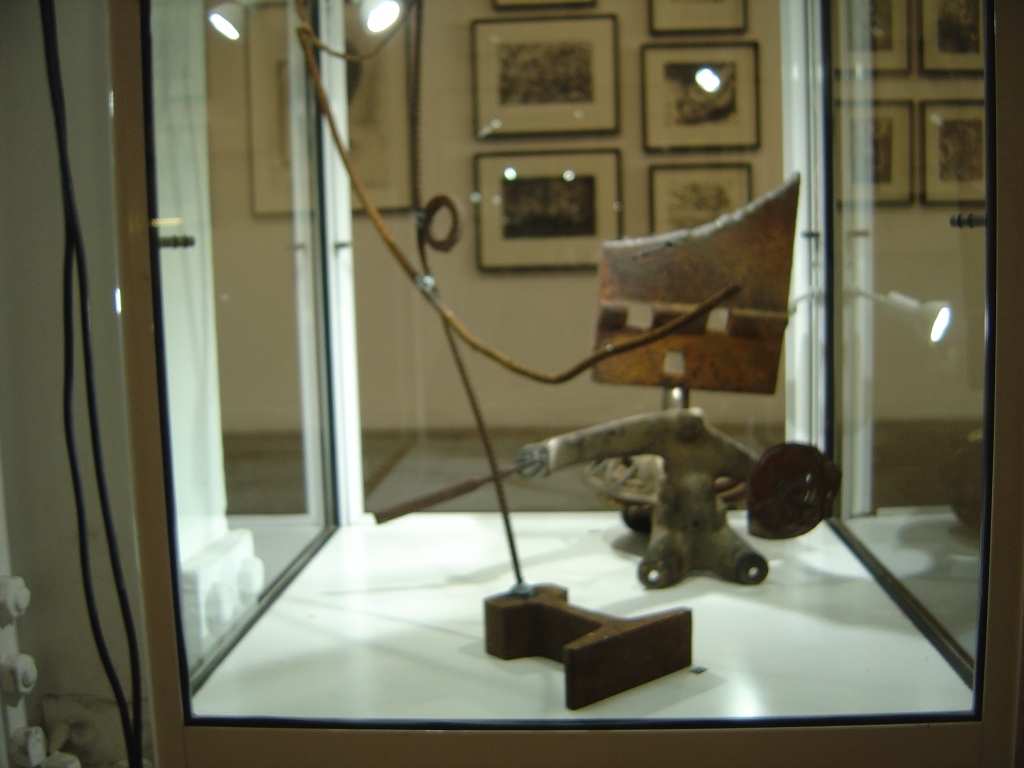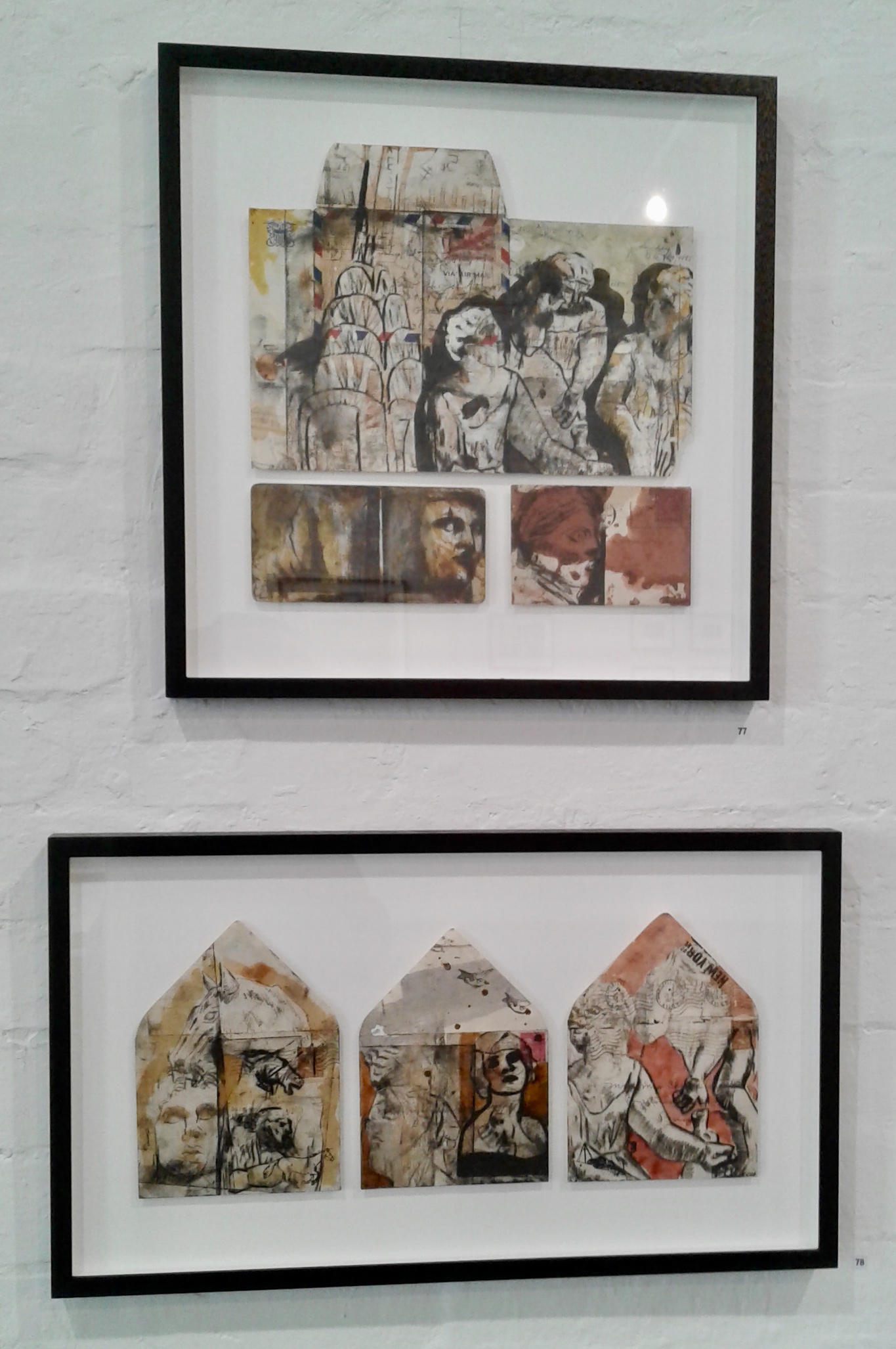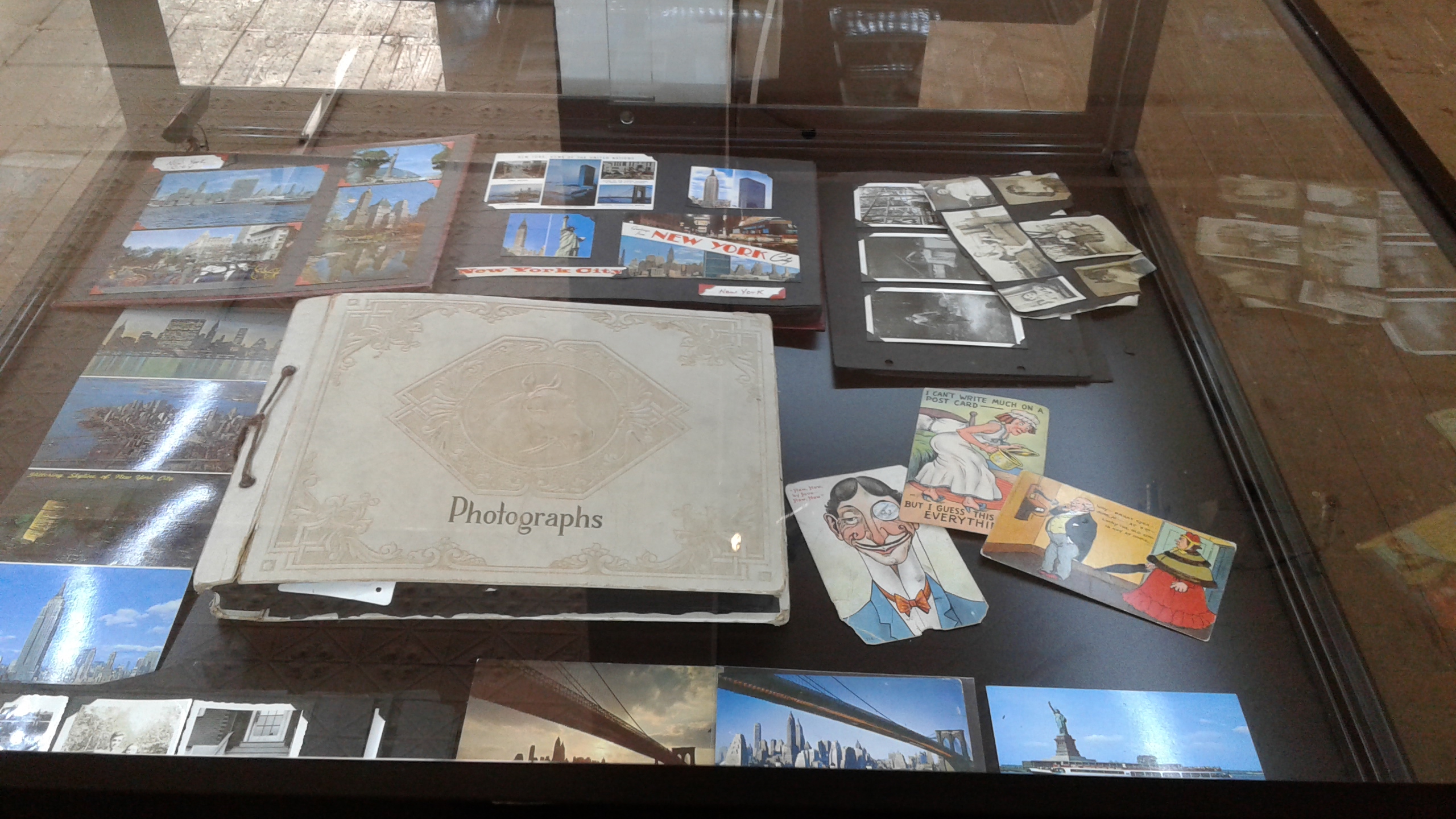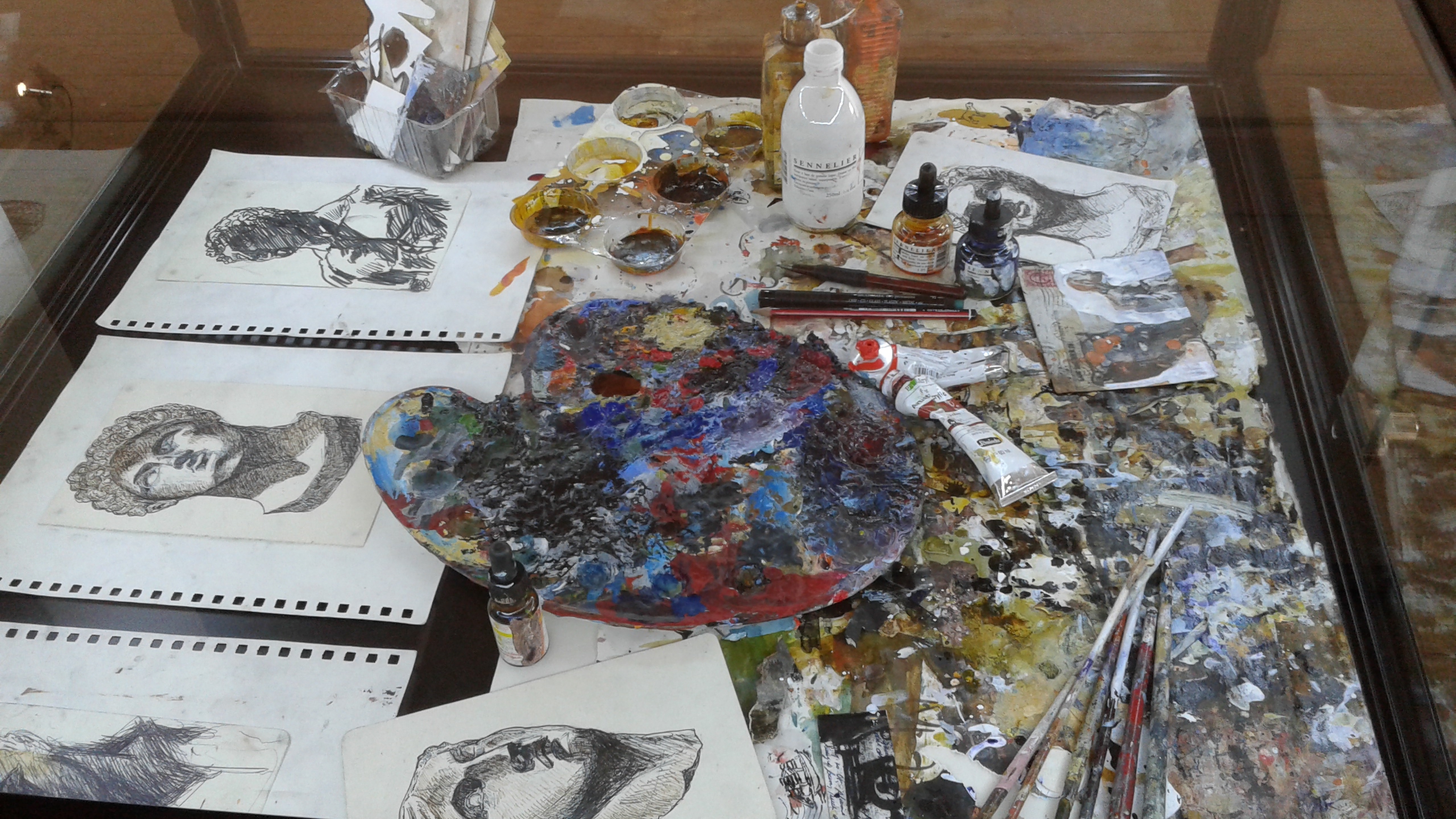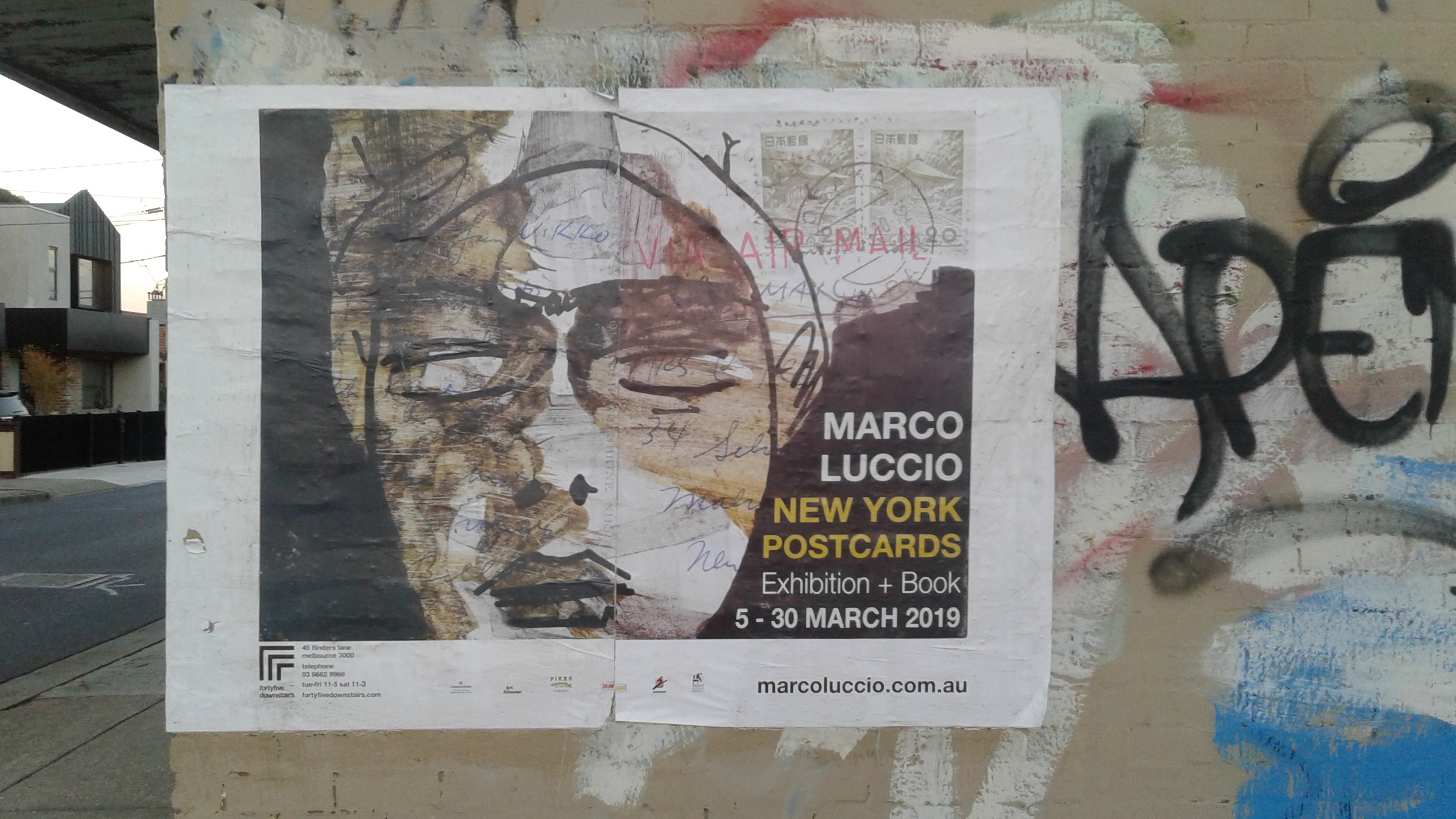A local cross-disciplinary artist, Amy Hurley, has an installation, A Sorry Semblance, in the Cathedral Cabinet. Cathedral Cabinet is a glass display case at the entrance of Cathedral Arcade on the ground floor of the Nicholas Building (another reason to Save the Nicholas Building). It is across the road from where the Bourke and Wills Monument was previously located in Melbourne’s City Square; now, the site of a massive box covering the excavation for Melbourne’s new underground rail loop.

In her installation, Hurley has deconstructed the sculptural head of Bourke as imagined by the nineteenth-century sculptor Charles Summers, who made the memorial. Looking at the parts separately, I failed to recognise the face, hence the title, A Sorry Semblance.
The parts of Hurley’s installation were all relevant, from the quotes from a translation of Camus’ novel The Plague to the location across the road from the monument. However, the connections between Camus, Summers’ bronze statue of Bourke and the white ceramic tiles were not strong enough and the installation looked unfinished.
I was looking around Melbourne galleries around Flinders Lane on Wednesday when I saw A Sorry Semblance. There wasn’t much on; exhibitions installations were being done at Craft Victoria and Platform while Mailbox Art Space stood empty. It was my first time looking around galleries since Melbourne’s long lockdown. Needing to check-in and prove my double vaccinated status at every gallery was slowing me down.
Upstairs at Flinders Lane Gallery, I had to look closely at Kendal Murray’s pieces because they looked similar to those by Tinky, fortunately without the awful puns. Of course, in the last decade, I’ve seen artists from Daniel Dorall, Tinky, the Little Librarian, to Kendal Murray have used HO scale model railway figures (see my post about artists who are the same).
At fortyfivedownstairs, there was an exhibition and launch of a limited edition book, Tales from the Greek – Myth, Beauty and Brutality by writer John Hughes with art by Melbourne-based Marco Luccio. Inspired by classical Greek mythology, this is a titan of an exhibition of paintings, prints and sculptures created over five years. There is a gallery full of images of Trojan Horses, minotaurs, Sisyphus and sirens. And the strongest were Luccio’s rough warriors and other figures made of welded found metal (better than my poor photo). See my review of one of Luccio’s previous exhibitions.
Summarising my excursion amongst the galleries of Flinders Lane reminded me of several things: the long tail of classical Greek mythology, the similarity of contemporary artists, and the work going on in Melbourne’s smaller alternate exhibition spaces, like Cathedral Cabinets.
